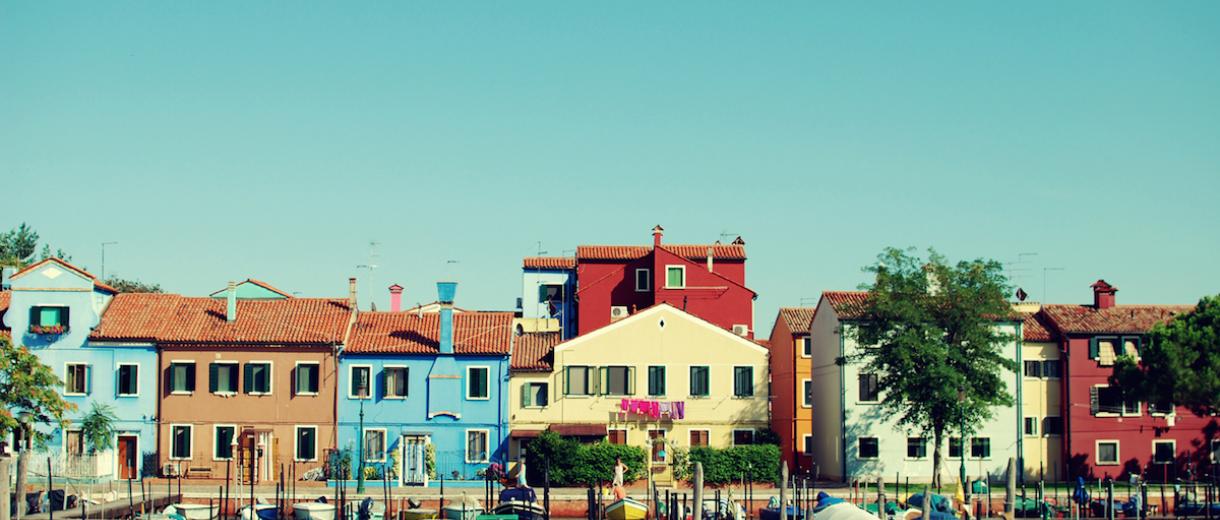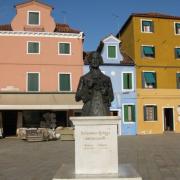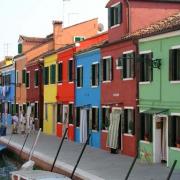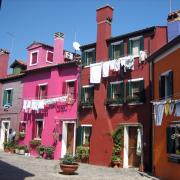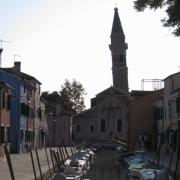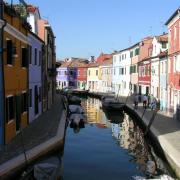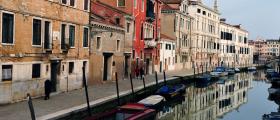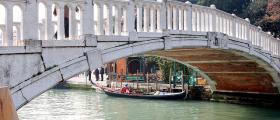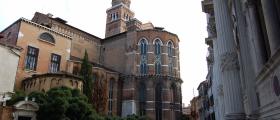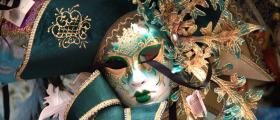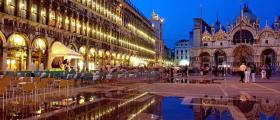Burano Island
Burano is amongst the main islands of the Venetian lagoon. At the moment about 3000 people live there and it is part of the municipality of Venice. It is linked to the smaller island of Mazzorbo by a small bridge.
Just like Venice, it is divided into “Sestieri” (districts): San Martino Sinistro, San Martino Destro, San Mauro, Terranova and Giudecca (not to be confused with the homonymous island).
The isle of Burano is famous for the lace working art, (a tradition since the XVI century), its bright multicoloured houses and for the culinary traditions.
The centenary lace sawing school founds its history on a legend: a fisherman from Burano resisted to the sound of the Sirens in the name of the love for his girlfriend that was waiting for him in Burano. He received from the Queen of the Waves a crown made of foaming water to give to his beloved woman.
The friends of the lucky lady, envious of the gift she had, tried to copy it, that’s how the Burano lace sawing school was born, a romantic tale that suits the romantic atmosphere of the island.
The Island, as many zones of the Venetian Lagoon, was founded by some inhabitants of the Roman city of Altino during the Barbarian invasions. The name Burano comes from the word Boreana, a district or a door in the city of Altino.
The first houses made of bricks were built around year 1000, as the early houses were pile dwellings with walls and ceilings made of cane and mud. Its autonomy ended soon under the control of Venice as it is now.
The centre of the island lies around the Church of San Martino and faces Baldassarre Galuppi Square (realized filling in a canal). This is the only church of the island and its bell tower is well known for being tilt of several degrees because of its pliable ground.
The colours of the houses are a peculiarity that makes the island unique. The origin of the colours is unknown, they could be possibly related to a family name or, more likely, to help fishermen to find out the island during the foggy days (not a rarity at all for Burano).
If you'd like to take home with you a small part of tradition you can buy a packet of “Bussolai” , a typical Biscuit made in Burano, yellow, made of eggs, flour, butter, sugar a sort of doughnut, (not to be confused with the Bussolai made in Chioggia, toasted bread with the shape of a ring).
The best periods to visit the island are Springtime and Summertime, either for the weather or the absence of fog. It can be reached from Venice, Murano with public boats (that link also Torcello and Treporti).

